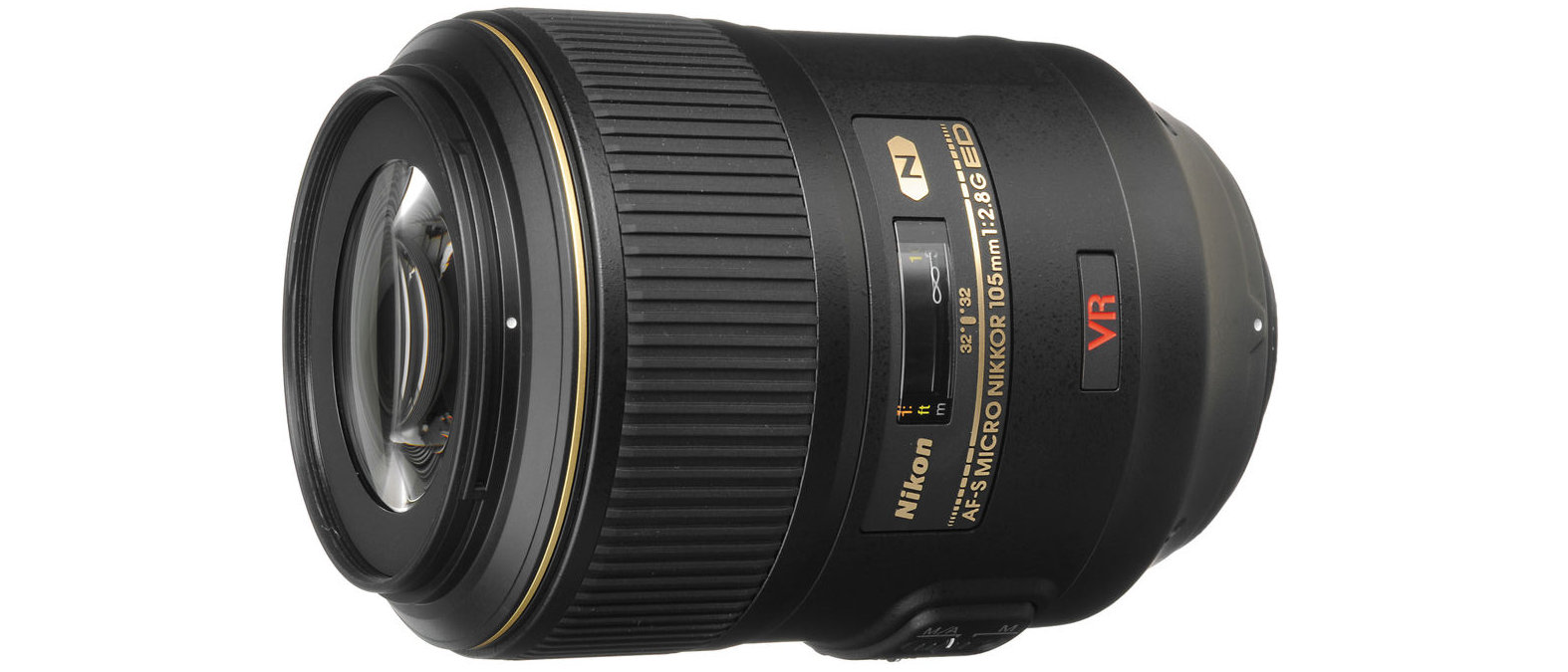Digital Camera World Verdict
This Nikon Micro lens combines a classic focal length and f/2.8 aperture rating, along with full 1.0x magnification at its shortest focus distance of 0.31m, as measured from the focal plane (equating to the active surface of the host camera’s image sensor). As such, it gives a comfortable working distance of 15cm or about 6 inches between the front of the lens and the subject, for full 1.0x macro shooting. Performance is very good overall but the standard VR system is of little benefit for extreme close-ups. On balance we prefer the Sigma 105mm f/2.8 EX DG OS HSM Macro and Tamron SP 90mm f/2.8 Di USD VC Macro.
Pros
- +
Good build quality
- +
Good image quality
- +
VR useful for general shooting
Cons
- -
No ‘hybrid’ optical stabilization
- -
Not extensively weather-sealed
- -
Narrow aperture sharpness drop-off
Why you can trust Digital Camera World
The Nikon AF-S Micro 105mm f/2.8 G IF ED VR sits on the top rung of Nikon’s extensive range of F-mount Micro lenses, which includes old-school 60mm, 105mm and 200mm ‘AF’ lenses in which autofocus is driven from a motor in compatible camera bodies. There are also 40mm and 85mm AF-S DX (APS-C format) options, and FX (full-frame) compatible AF-S 60mm and 105mm lenses. The AF-S Micro 105mm VR Micro is the pick of the crop, and the own-brand Nikon lens we’d choose for shooting on DX as well as FX camera bodies.
Specifications
Mount: Nikon F (FX)
Full frame: Yes
Autofocus: Yes
Stabilisation: Yes
Lens construction: 14 elements in 12 groups
Angle of view: 23.3 degrees
Diaphragm blades: 9
Minimum aperture: f/32
Minimum focusing distance: 0.31m
Maximum magnification ratio: 1.0x
Filter size: 62mm
Dimensions: 83x116mm
Weight: 750g
Key features
This Nikon Micro lens features a single ED (Extra-low Dispersion) element and an optical image stabilizer. However, unlike the stabilizers of similar Canon and Tamron lenses, it’s a standard rather than hybrid design, only able to counteract angular vibrations. It’s fairly effective in medium to long-range shooting, with a modest 3-stop rating, but without the ability to correct for x-y shift as well as angular vibration, it’s relatively ineffective for handheld close-up shooting.
Build quality feels good overall and the Nikon features a weather-sealed mounting plate and Nano Crystal Coat for minimizing ghosting and flare. Autofocus is courtesy of the typical ring-type ultrasonic system employed in most Nikon AF-S lenses. It comes complete with an autofocus range limiter switch, but that only gives the option of locking out the short end of the range. It’s therefore of no benefit for close-up photography.
Performance
At apertures of f/4 to f/11, sharpness in the central region of the frame is exceptional, although extreme edge/corner sharpness is comparatively disappointing. Sharpness also drops off a little more than usual for a macro lens at both ends of the aperture range, which can be disappointing when you want to use a very narrow aperture to expand the depth of field in extreme close-up shooting. Distortion is very minimal but color fringing can be apparent towards image corners when uncorrected, especially at medium to narrow apertures.
Lab results
We run a range of lab tests under controlled conditions, using the Imatest Master testing suite. Photos of test charts are taken across the range of apertures and zooms (where available), then analyzed for sharpness, distortion and chromatic aberrations.
We use Imatest SFR (spatial frequency response) charts and analysis software to plot lens resolution at the center of the image frame, corners and mid-point distances, across the range of aperture settings and, with zoom lenses, at four different focal lengths. The tests also measure distortion and color fringing (chromatic aberration).
Sharpness:
Levels of sharpness are generally excellent across the whole image frame, right into the corners, but there’s a bit of a drop-off in center-sharpness at f/2.8 and narrow-aperture sharpness isn’t as good as in some competing macro lenses.
Fringing:
Color fringing is more noticeable than with many competing macro lenses, especially towards the edges and corners of the image frame, throughout the entire aperture range.
Distortion: -0.49
The best camera deals, reviews, product advice, and unmissable photography news, direct to your inbox!
There’s very little barrel distortion but technically the Nikon is worse in this respect than most competing macro lenses.
Verdict
This Nikon Micro lens combines a classic focal length and f/2.8 aperture rating, along with full 1.0x magnification at its shortest focus distance of 0.31m, as measured from the focal plane (equating to the active surface of the host camera’s image sensor). As such, it gives a comfortable working distance of 15cm or about 6 inches between the front of the lens and the subject, for full 1.0x macro shooting. Performance is very good overall but the standard VR system is of little benefit for extreme close-ups. On balance we prefer the Sigma 105mm f/2.8 EX DG OS HSM Macro and Tamron SP 90mm f/2.8 Di USD VC Macro.
Read more:
• Best camera lenses to get
• Best Canon lenses
• Best Nikon lenses
• Best Sony lenses
Matthew Richards is a photographer and journalist who has spent years using and reviewing all manner of photo gear. He is Digital Camera World's principal lens reviewer – and has tested more primes and zooms than most people have had hot dinners!
His expertise with equipment doesn’t end there, though. He is also an encyclopedia when it comes to all manner of cameras, camera holsters and bags, flashguns, tripods and heads, printers, papers and inks, and just about anything imaging-related.
In an earlier life he was a broadcast engineer at the BBC, as well as a former editor of PC Guide.




